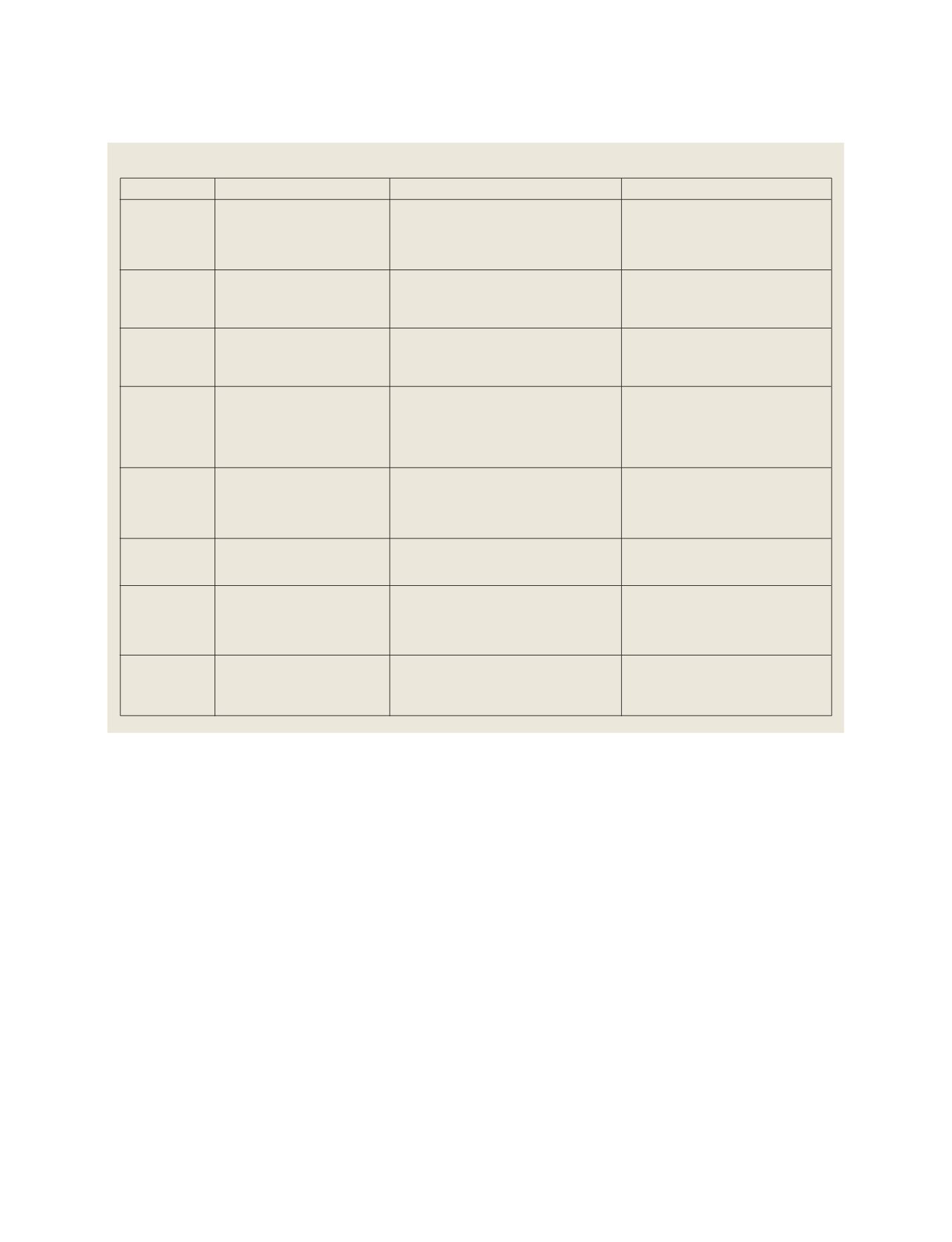

[
] 236
IGOL are widely reflected in the related GEO task DA-
07-02 on global land cover.
The new European Space Agency (ESA) funded
Globcover product will be based on 2005/06 Envisat Meris
data and will provide the highest resolution (300m),
consistent global land cover map, fully compliant with
international standards for land cover characterization
(UN Land Cover Classification System) and validation
(CEOS best practices).
2
Additional progress can be
reported for national and regional high-resolution land
cover mapping programmes, including the Corine/GMES
service, US National Land Cover Database, and new prod-
ucts evolving in countries such as Canada and China, as
well as those in the UN Global Land Cover Network.
High-resolution land cover change dataset
Work is ongoing toward the development of a high-reso-
lution (Landsat-type) land cover change dataset. NASA
and the US Geological Survey have been making progress
in acquiring high-resolution imagery for the Mid-decadal
Global Land Survey that will provide consistent,
preprocessed, global, free-of-charge Landsat data for 2005,
GEO related achievements in 2007
The Global Observation of Forest and Land Cover Dynamics (GOFC-
GOLD) is a coordinated international effort to ensure a continuous
programme of space-based and in situ forest and other land cover obser-
vations, in order to better understand global change, to support
international assessments and environmental treaties, and to contribute
to natural resources management. The GOFC-GOLD community, with
GEO involvement, was able to achieve significant progress in task DA-
07-02 in 2007.
In 2004, the Integrated Global Observing Strategy (IGOS) part-
nership started to develop an additional theme covering all land
requirements outside of those covered by the established themes.
The new theme is known as Integrated Global Observations of the
Land (IGOL) and defines detailed observation requirements for
different areas, including agriculture, forestry, land degradation,
ecosystem goods and services, biodiversity and conservation, human
health, water resource management, disasters, energy, urbanization
and climate change. The IGOL document has been compiled and
presented to the IGOS Partnership (IGOS-P) plenary in 2007 as the
first comprehensive and integrated observation strategy for the land
domain. The process of integrating the IGOL strategies into GEO
implementation has been initiated. The land cover requirements of
Region covered
Australia
Canada
Different countries
worldwide
European Union
Great Britain
New Zealand
South Africa
United States
Mapping/monitoring programme
National Carbon Accounting System -
Land Cover Change Project (LCCP)
Earth Observation for Sustainable
Development of Forests (EOSD)
United Nations Global Land Cover
Network (GLCN)
Coordination of Information on the
Environment (CORINE)
Land Cover Map of Great Britain
New Zealand Land Cover Database
South African National Land Cover
Database
National Land Cover Dataset (NLCD)
Objective
To monitor land cover change for the past 30 years
for integrated and comprehensive greenhouse gas
emissions reporting for land based emissions and
to underpin policies for greenhouse and natural
resource management
To produce a land cover map of the forested area
of Canada for monitoring of Canada’s forests
(internal monitoring and reporting, participation in
international programmes)
Improve the availability of reliable and
standardized information on land cover and its
changes at the global level and for a large user
community
To provide an inventory of the Earth surface
features for managing the environment; to compile
consistent data of the land cover for Europe in
order to determine EU’s environment policy,
assess the effects of this policy and incorporate
the environment dimension into other policies
To provide a census of the countryside of the UK,
in the form of digital maps and databases, plus a
range of derived products, for use in a
geographical information system (GIS) and
statistical packages
To investigate the feasibility of using satellite
imagery for forest resource mapping and
monitoring within New Zealand
To provide strategic, national-coverage land-cover
information, on an operationally achievable,
repeatable basis for general modelling, natural
resource assessment, statistical and data
integration purposes
To generate a consistent, seamless, and accurate
land cover data set for the conterminous United
States
Data products
Land cover change 1972-2000 based on
Landsat: maps of forest cover at each time
slice; maps of land cover change between
each pair of consecutive time slices
Land-cover map of forested areas from
Landsat data for 2000 and eventually for
1990 (base year for Kyoto reporting), updates
intended for 2007 and 2012
More than 15 countries fully mapped using
Landsat data (i.e. Africover, Asiacover).
Translation and harmonization of existing
databases. Continuing effort
Land cover/use dataset and land change
based on 1990 and 2000 Landsat data.
Continuation planned under Global
Environment and Security (GMES)
Land cover and land use and change for 1990
and 2000 using Landsat data
Land cover and land use and change for
1996/97 (based on SPOT) and 2001/02
(based on Landsat)
Land-cover database 1994/95 and 2000
based on Landsat data including change
assessment
Land cover/use maps from 1992 and 2001
Landsat data interpretations and independent
per-pixel estimates of imperviousness and
tree canopy. Continuation planned
Examples of national and regional land cover/use mapping and monitoring programmes building upon Landsat-type observations
S
OCIETAL
B
ENEFIT
A
REAS
– E
COSYSTEMS
















